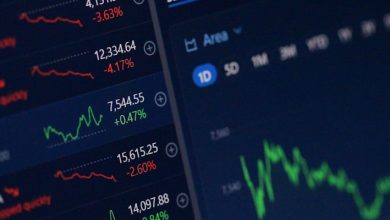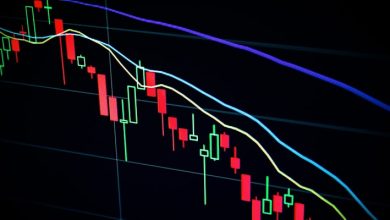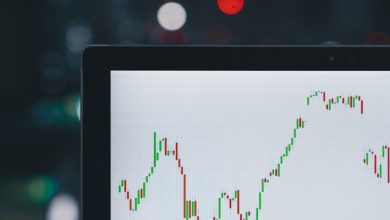DeFi Market Insights: Growth, Challenges, and Opportunities

- Understanding the DeFi Market Landscape
- Exploring the Factors Driving Growth in DeFi
- Challenges and Risks Faced by the DeFi Industry
- Opportunities for Innovation and Expansion in DeFi
- The Role of Regulation in Shaping the Future of DeFi
- Key Trends to Watch in the DeFi Market
Understanding the DeFi Market Landscape
The DeFi market landscape is complex and constantly evolving, with various opportunities and challenges for participants to navigate. Understanding the dynamics of this market is crucial for anyone looking to capitalize on the growth potential it offers.
One of the key characteristics of the DeFi market is its decentralized nature, which means that transactions are conducted directly between participants without the need for intermediaries. This not only reduces costs but also increases transparency and security. However, this decentralized structure also presents challenges in terms of regulation and security risks.
Another important aspect of the DeFi market landscape is the wide range of products and services available to users. From decentralized exchanges to lending platforms to yield farming, there are numerous opportunities for individuals to engage with DeFi in a way that suits their risk tolerance and investment goals. This diversity of options is both a strength and a challenge, as it can be overwhelming for newcomers to the space.
Overall, the DeFi market landscape is a dynamic and fast-paced environment that offers tremendous growth potential for those willing to navigate its complexities. By staying informed about the latest trends and developments, investors can position themselves to take advantage of the numerous opportunities that DeFi has to offer.
Exploring the Factors Driving Growth in DeFi
One of the key factors driving growth in the decentralized finance (DeFi) sector is the increasing demand for financial services that are not reliant on traditional banking institutions. This shift towards decentralized platforms has been fueled by the desire for greater financial inclusion and accessibility for individuals around the world. As more people become aware of the benefits of DeFi, such as lower fees and faster transaction times, the market continues to expand rapidly.
Another factor contributing to the growth of DeFi is the innovation happening within the space. Developers are constantly creating new protocols and applications that offer unique and innovative solutions to financial problems. This continuous innovation keeps the DeFi market dynamic and exciting, attracting more users and investors looking to capitalize on the potential for high returns.
Additionally, the rise of decentralized exchanges (DEXs) has played a significant role in driving growth within the DeFi ecosystem. These platforms allow users to trade cryptocurrencies directly with one another, without the need for a central authority. This peer-to-peer trading model has proven to be popular among crypto enthusiasts who value privacy and security in their transactions.
Overall, the combination of increasing demand for decentralized financial services, ongoing innovation, and the popularity of DEXs has created a fertile ground for the growth of the DeFi market. As more users and investors continue to flock to this space, the opportunities for growth and expansion are seemingly limitless.
Challenges and Risks Faced by the DeFi Industry
As the DeFi industry continues to grow rapidly, it also faces a number of challenges and risks that need to be addressed in order to ensure its long-term sustainability and success.
- Security Concerns: One of the biggest risks facing the DeFi industry is security vulnerabilities. With the increasing popularity of DeFi platforms, hackers are constantly looking for ways to exploit weaknesses in the system.
- Regulatory Uncertainty: Another challenge for the DeFi industry is the lack of clear regulatory guidelines. As governments around the world grapple with how to regulate decentralized finance, there is a risk that new regulations could stifle innovation and growth in the industry.
- Smart Contract Risks: Smart contracts are at the heart of many DeFi platforms, but they are not foolproof. Bugs in smart contracts can lead to significant financial losses for users, highlighting the need for thorough auditing and testing.
- Market Volatility: The cryptocurrency market is known for its extreme volatility, and this can have a major impact on DeFi platforms. Sudden price swings can lead to liquidity issues and result in users losing their investments.
- Centralization Concerns: While DeFi is meant to be decentralized, there are concerns that some platforms are becoming too centralized. This goes against the core principles of DeFi and could undermine its long-term viability.
Opportunities for Innovation and Expansion in DeFi
There are various opportunities for innovation and expansion in the decentralized finance (DeFi) space. As the DeFi market continues to grow rapidly, there is a high demand for new and improved solutions to address the challenges that come with this growth. Here are some key areas where innovation and expansion can make a significant impact:
- Interoperability: Enhancing interoperability between different DeFi platforms can help increase efficiency and liquidity in the market. By enabling seamless communication and data sharing between platforms, users can access a wider range of services and assets.
- Scalability: Improving scalability is crucial for DeFi to accommodate the increasing number of users and transactions. Implementing solutions such as layer 2 scaling and sidechains can help alleviate congestion on the Ethereum network and enhance overall performance.
- Security: Strengthening security measures is essential to protect users’ funds and data in DeFi protocols. Developing more robust smart contract audits, implementing multi-signature wallets, and enhancing encryption techniques can help mitigate the risks of hacks and vulnerabilities.
- Regulatory Compliance: Addressing regulatory challenges is key to the long-term sustainability of DeFi. Working towards compliance with existing regulations and collaborating with regulators to establish clear guidelines can help build trust with traditional financial institutions and mainstream users.
- User Experience: Improving the user experience is critical to attracting and retaining a broader user base in DeFi. Enhancing the design and functionality of decentralized applications (dApps), providing better educational resources, and offering user-friendly interfaces can make DeFi more accessible and appealing to newcomers.
By focusing on these areas of innovation and expansion, the DeFi ecosystem can continue to evolve and thrive in the ever-changing landscape of decentralized finance. Embracing new technologies and strategies will help DeFi overcome its challenges and unlock new opportunities for growth and development.
The Role of Regulation in Shaping the Future of DeFi
Regulation plays a crucial role in shaping the future of decentralized finance (DeFi). As the DeFi market continues to grow rapidly, regulators around the world are paying closer attention to this innovative sector. Regulatory frameworks help ensure that DeFi platforms operate within legal boundaries, protecting investors and promoting market integrity.
While some argue that excessive regulation could stifle innovation and hinder the growth of DeFi, others believe that a certain level of regulation is necessary to prevent fraud, money laundering, and other illicit activities. Striking the right balance between innovation and regulation is key to the sustainable development of the DeFi market.
Regulatory clarity is essential for the long-term success of DeFi. Clear guidelines can provide certainty to market participants, encourage institutional adoption, and foster trust in the ecosystem. Collaboration between DeFi projects, regulators, and policymakers is crucial to ensure that regulations are both effective and conducive to innovation.
Key Trends to Watch in the DeFi Market
As the DeFi market continues to evolve rapidly, there are several key trends to watch that can provide valuable insights for investors and stakeholders. These trends can help anticipate market movements and identify potential opportunities for growth.
- Interoperability: One of the key trends in the DeFi market is the push towards greater interoperability between different protocols and platforms. This interoperability can help create a more seamless experience for users and enable the development of new innovative products.
- Growth of Decentralized Exchanges (DEXs): Decentralized exchanges have seen significant growth in recent years, with platforms like Uniswap and SushiSwap gaining popularity among users. The rise of DEXs is likely to continue as they offer lower fees and greater security compared to centralized exchanges.
- Lending and Borrowing: The lending and borrowing sector within DeFi has also been growing rapidly, with platforms like Compound and Aave leading the way. This trend is driven by the increasing demand for decentralized financial services and the potential for earning passive income through lending.
- Staking and Yield Farming: Staking and yield farming have become popular ways for users to earn rewards on their crypto holdings. These activities involve locking up funds in smart contracts to support network operations or provide liquidity, in exchange for earning additional tokens.
- Regulatory Challenges: With the rapid growth of the DeFi market, regulatory challenges have also emerged as a key trend to watch. Regulatory uncertainty and potential crackdowns in certain jurisdictions could impact the growth and adoption of decentralized finance.
By staying informed about these key trends and developments in the DeFi market, investors and stakeholders can make more informed decisions and capitalize on the opportunities presented by this rapidly evolving sector.






